The Green Design Competition
by: Sustainable Design News, 2011-12-06 22:02:12 UTC
 The Green Design Competition is a competition for entrepreneurs in the design industry, for individuals (and teams) with a vision of what the future of design should look like.
The Green Design Competition is a competition for entrepreneurs in the design industry, for individuals (and teams) with a vision of what the future of design should look like.
The aim of the competition is to find the talented entrepreneurs in the industry who aim to create a new product which sustains biodiversity.
 GE gas plant goes zero to 100 in minutes
GE gas plant goes zero to 100 in minutes
by: Gizmodo , 2011-12-08 12:33:09 UTC
General Electric lands a deal to supply French energy provider EDF with its high-tech natural gas plant that's flexible and efficient.
Self-shading smart window runs on sunlight
by: Gizmodo , 2011-12-08 15:10:59 UTC
RavenBrick is making a self-tinting, heat-blocking glass coating that operates only from the sun's heat, rather than electricity.
An X-Ray Machine The Size Of An iPhone That Looks Like A Star Trek Tricorder
by: fast company, 2011-12-08 14:27:46 UTC
California startup Tribogenics is betting that their technology will transform health care--and investors seem to agree.
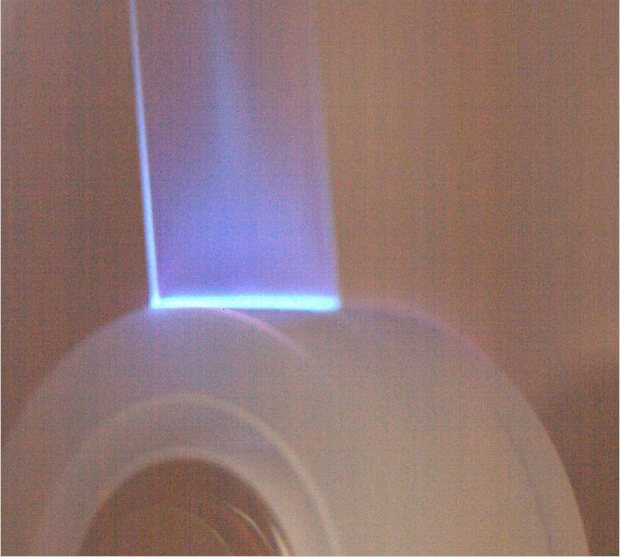 X-ray machines traditionally use bulky power sources to generate rays. However, California startup Tribogenics is betting that a novel method of powering X-ray machines will revolutionize medical care and airport security. The best part? Tribogenics has already developed prototypes that fit in a pocket.
X-ray machines traditionally use bulky power sources to generate rays. However, California startup Tribogenics is betting that a novel method of powering X-ray machines will revolutionize medical care and airport security. The best part? Tribogenics has already developed prototypes that fit in a pocket.
Tribogenics' products rely on a counterintuitive discovery: X-rays are generated when unrolling Scotch tape in a vacuum. In a Nature article, UCLA researchers Carlos Camara, Juan Escobar, Jonathan Hird, and Seth Putterman detailed how Scotch tape can generate surprisingly large amounts of X-rays thanks to visible radiation generated by static electricity between two contacting surfaces. The research encountered challenges thanks to the fact that Scotch tape and generic brand adhesive tapes generated slightly different energy signatures; the composition of Scotch tape adhesive is a closely guarded 3M trade secret. Camara is Tribogenics' chief scientist; the company is headed by Dale Fox, best known for developing the first screen overlay protectors for mobile phones.
Fox told Fast Company that “every other X-ray source in the world uses a high-voltage transformer connected to a vacuum tube. In contrast, we've harnessed the power of the immense voltages in static electricity to create tiny, low-cost, battery-operated X-ray sources for the first time in history. It's like the jump the electronics industry took when it moved from vacuum tubes to transistors.” According to Fox, Tribogenics has already developed X-ray energy sources the size of a USB memory stick. While Tribogenics representatives declined to discuss pricing for upcoming products, the firm “very comfortably” promised that the cost would be less than 10% than that of any existing X-ray technology.
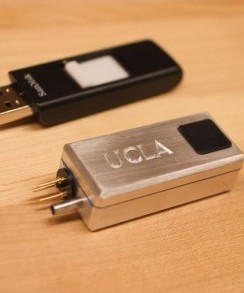
Tribogenics' effort to bring products to market received a major boost on Tuesday, December 6, thanks to $2.5 million in funding received from Flywheel Ventures and an assortment of angel investors. The firm was founded in 2009 and appears to have completed the difficult step of finding commercial applications for pure research.
The guts of Tribogenics' ultra-portable X-ray machines can be traced, like so many other things, to DARPA. UCLA received research funding from the government agency in 2007; DARPA literature has detailed their hope that cheap, portable X-ray machines could revolutionize battlefield medicine, emergency first response, and airport security. Additional funding was received from the U.S. Army Telemedicine & Advanced Technology Research Center. The technology was later featured on the television show Mythbusters.
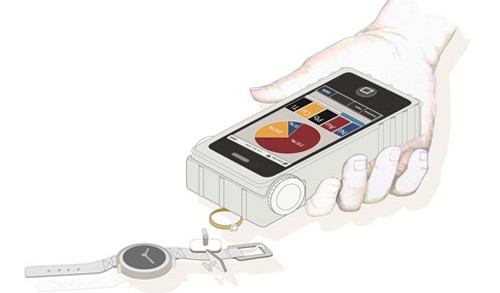
While no commercial products have been released by Tribogenics yet, several prototypes show potential. The company appears to be banking most of their hopes on a product called a Pocket XRF Analyzer (pictured), which representatives explicitly compared to a Star Trek tricorder. The XRF Analyzer, which is approximately the size of an iPhone, can identify gold or other precious jewels for jewelers, detect lead traces in toys, and can find traces of radioactive elements in airport security settings.
However, ultra-portable X-ray machines show the greatest potential for becoming a disruptive medical technology. Tribogenics' methods have revolutionary ramifications for catheterized radiation therapy, which currently poses significant radiation risks for patients, doctors, and nurses. According to Fox, the company's products eliminate the need for radioactive isotopes.
Release dates for Tribogenics products for the consumer market have not been announced; however, the firm claims that Pocket XRF Analyzers will drop to a price point affordable for the mass market--and not just for specialists. However, the firm will face challenges in transforming devices that generate large amounts of radiation into consumer products.
[Top Image: UCLA/Carlos Camara and Juan Escobar; Other images via Tribogenics]
For more stories like this, follow @fastcompany on Twitter. Email Neal Ungerleider, the author of this article, here or find him on Twitter and Google+.


 Richard Branson: Screw Business As Usual, And Make Your (Huge Piles Of) Money By Doing Good
Richard Branson: Screw Business As Usual, And Make Your (Huge Piles Of) Money By Doing Good
by: fast company, 2011-12-08 17:26:31 UTC
The trouble is, not being businesses, [nonprofits] never made expansion one of their objectives and sadly all of us have made the mistake as donors to encourage this limited type of thinking. Often, they're geared around being drip-fed by philanthropists and foundations, usually on a project-by-project basis…you're never going to be in a position to build the capacity that you need to make a big difference.
Sand Shine
by: Yanko Design, 2011-12-08 08:01:03 UTC
The Desert Storm lamp’s use of sand as the main material provides an organic feel in both appearance and touch. The shape of these sand-molded lamp shades brings to mind primitive dessert dome dwellings and the fixture’s overall figure resembles plants that blossom near the Mediterranean seashore. Though they look fragile, the shades’s strength partners with that of the fixture’s metal pole.
Designer: Nir Meiri






----------
Yanko Design
Timeless Designs - Explore wonderful concepts from around the world!
Yanko Design Store - We are about more than just concepts. See what's hot at the YD Store!
(Sand Shine was originally posted on Yanko Design)
Age-old Material Meets Modern Design
by: Yanko Design, 2011-12-08 08:01:54 UTC
After self-producing two pneumatic extruders to push soft clay through die, designer Max Cheprack put them to use, gently manipulating the material with great precision and complexity. This Clay Stool design is just one result of the process and represents not only a culturally historic material of the designer’s homeland, but also new possibilities in ceramic design and production.
Designer: Max Cheprack
Extruding Clay from max cheprack on Vimeo.
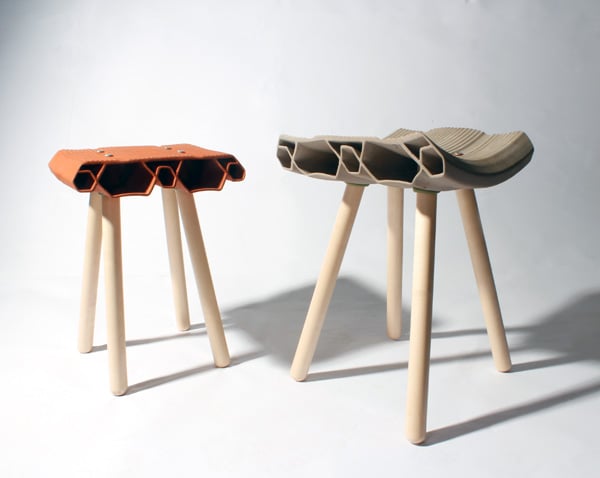
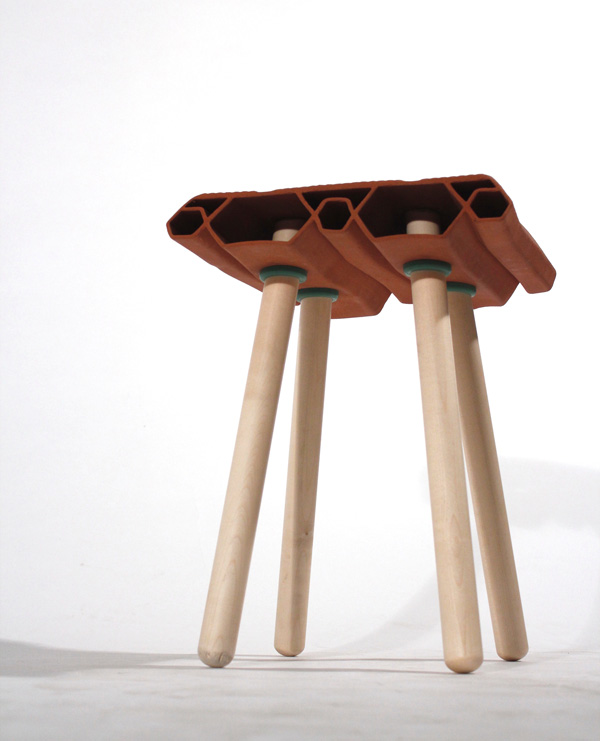

----------
Yanko Design
Timeless Designs - Explore wonderful concepts from around the world!
Yanko Design Store - We are about more than just concepts. See what's hot at the YD Store!
(Age-old Material Meets Modern Design was originally posted on Yanko Design)
Beautiful Speakers Made from Sustainable Bamboo and Leather
by: Inhabitat , 2011-12-07 17:40:49 UTC

Designed by Serene Audio, these stunning little speakers are made from FSC approved bamboo and leather. The eco-minded company is as passionate about design as they are about music, and special attention is paid to all the minute details of both aesthetic and acoustic qualities. Each design goes though a myriad cycles, scientific measurement, fine tuning by ear, and aesthetic refinement to give way to pieces to be admired by both the eyes and ears.
+ Seren Audio
The article above was submitted to us by an Inhabitat reader. Want to see your story on Inhabitat? Send us a tip by following this link. Remember to follow our instructions carefully to boost your chances of being chosen for publishing!



Permalink |
Add to
del.icio.us |
digg
Post tags: art speakers, bamboo speakers, eco speakers, fancy speakers, green gadgets, high end speakers, serene audio speakers, speakers as decor
Traditional Weaving is Reinvented With Amazing Installations by We Make Carpets
by: Inhabitat , 2011-12-07 21:40:48 UTC

Dutch design trio We Make Carpets has reinvented the form of the traditional woven rug by creating brilliant installation carpets by weaving together unusual materials. In the past, the collective created their carpets from products that once used have no value, such as pegs, pasta, and paper-clips (take a look at their archives). Now they have created a new series of five decorative carpets constructed entirely from folded paper-boats.


Read the rest of Traditional Weaving is Reinvented With Amazing Installations by We Make Carpets
Permalink |
Add to
del.icio.us |
digg
Post tags: carpet design, consumer society statement, decorative paper artwork, innovative weaving, inventive design, paperboat carpet, symbolic paper art, we make carpets
Sourcemap Aims to Take Supply Chain Visibility to the Next Level
by: Greener Design, 2011-12-07 12:06:11 UTC
Sourcemap, the crowdsourced archive of supply chain information, is readying for a big 2012 with new product and service offerings geared toward large firms with complex supply chains.







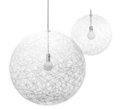
Comments by our Users
Be the first to write a comment for this item.